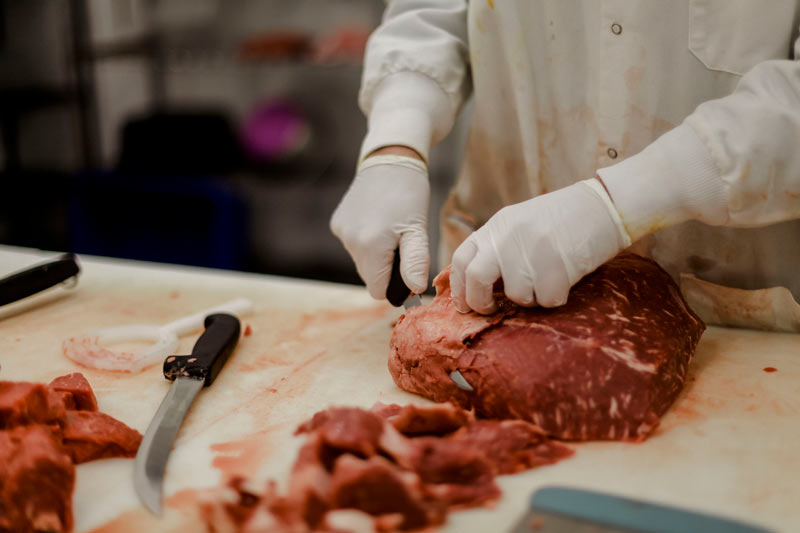High-quality meats available at Bagley Meat Market Edwardsville IL for your next event.
Explore Fresh and High-Quality Meats at Your Regional Meat Market
Exploring fresh and top notch meats at your neighborhood meat market supplies an opportunity to boost your culinary experience while supporting area farming. Recognizing the nuances of meat high quality and the benefits of selecting neighborhood items can considerably impact your recipes.
Advantages of Local Meat Markets

Another significant advantage is the level of client service given by local meat markets. Experienced staff frequently have thorough know-how regarding the items they sell, enabling customized suggestions customized to individual choices. This experience can be especially helpful when picking cuts or recognizing food preparation techniques.
In addition, regional meat markets often give a bigger variety of specialized meats and cuts that might not be offered in larger stores. This diversity allows customers to explore unique alternatives and trying out different recipes.
Moreover, purchasing at local meat markets fosters neighborhood engagement and sustainability. By sustaining local businesses, customers add to the local economy and promote sustainable farming methods. On the whole, the advantages of local meat markets develop a more rewarding purchasing experience, supplying high quality, solution, and community effect that bigger grocery chains typically can not duplicate.
Kinds Of Meats Offered
Meat markets are recognized for their diverse choice, dealing with a variety of cooking preferences and dietary needs. Clients can find an impressive variety of meats, ranging from traditional choices to specialized items. Common offerings consist of beef, pork, and fowl, each presenting one-of-a-kind tastes and appearances suitable for numerous recipes.
Beef is typically available in various types, including ground beef, steaks, and roasts, appealing to those that take pleasure in passionate dishes. Pork options usually encompass cuts such as chops, tenderloins, and ribs, all of which can be prepared in numerous styles, from grilling to slow-cooking. Poultry, primarily hen and turkey, uses lean protein choices that can be easily incorporated into a well balanced diet plan.
Along with these staples, several meat markets include specialty meats such as lamb, duck, and video game meats like venison or bison, appealing to daring eaters and those looking for options to more usual options. In addition, some markets may use refined meats like sausages, bacon, and deli meats, providing practical alternatives for fast meals. This extensive selection ensures that every customer can this page discover something to fit their taste and nutritional needs.
Understanding Cuts and High Quality
Picking the right cut of meat is crucial for attaining the wanted flavor and tenderness in any kind of meal. The high quality of meat is established by several elements, including the animal's type, age, diet regimen, and the specific cut itself.

When assessing top quality, look for marbling, which describes the intramuscular fat within the meat. Higher degrees of marbling typically indicate a richer flavor and a much more soft structure. In addition, the shade of the meat can act as an indication of quality. For beef, an intense red shade recommends quality, while pork needs to show up pale pink and fowl need to have a light pink shade.
Understanding these differences allows customers to make educated selections when purchasing meat. By choosing the suitable cut and identifying top quality indicators, home chefs can improve their culinary undertakings and guarantee an enjoyable dining experience.
Tips for Shopping Smart
Buying for fresh and top quality meats requires a thoughtful method to guarantee you get the very best value and flavor for your meals. Begin by why not find out more familiarizing on your own with various cuts and their corresponding costs. This knowledge will certainly allow you to make informed decisions and avoid paying too much for much more pricey cuts when much less pricey options might be adequate.
Furthermore, take into consideration buying during off-peak hours. This often causes a much more customized experience with the butcher, who can offer useful insights into product quality and preparation techniques. Always check the meats closely; search for dynamic color, firm structure, and very little fluid in the packaging, which can suggest freshness.
Understanding where your meat comes from and how it has actually been refined can substantially impact high quality. Getting larger quantities can save cash in the long run, specifically if you're able to ice up parts for later use.
Sustaining Neighborhood Farmers and Companies
Supporting neighborhood farmers and organizations fosters a feeling of area while making certain access to top notch meats. By buying from local meat markets, customers can directly sustain farming methods that focus on sustainability and honest treatment of pets. Neighborhood farmers usually execute responsible farming methods, which not only enhance the high quality of their items however likewise contribute favorably to the environment.
Buying in your area decreases the carbon footprint linked with transportation, as meats do not need to be shipped cross countries. In addition, local meat markets frequently use transparency pertaining to sourcing and production techniques, enabling consumers to make enlightened options concerning the food they take in (bagley meat market edwardsville il). This connection between consumer and manufacturer grows trust and urges the growth of local economies

By choosing local meats, customers can take pleasure in unique flavors and ranges that may not be readily available through larger, industrial suppliers. In significance, acquiring from regional meat markets enhances community bonds, sustains moral farming practices, and gives accessibility to fresher, healthier meats.
Conclusion
To conclude, neighborhood meat markets supply an unique benefit through their emphasis on quality, flavor, and sustainability. By giving access to a varied review variety of specialty meats and special cuts, these markets not just improve culinary experiences but also promote the support of neighborhood farmers and organizations. The expertise and competence of personnel more improve the shopping experience, ensuring consumers make notified options that add to both personal contentment and area wellness.